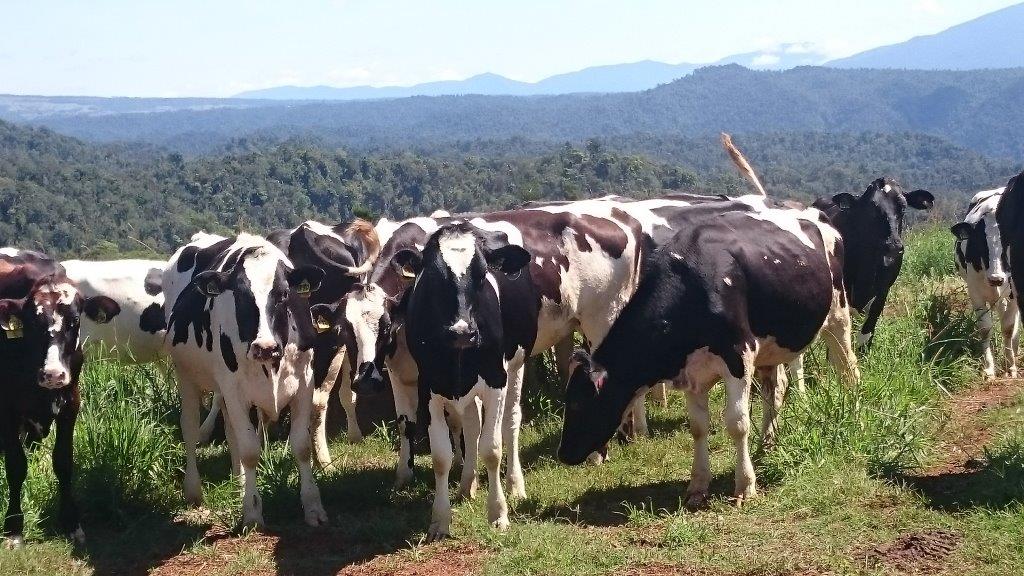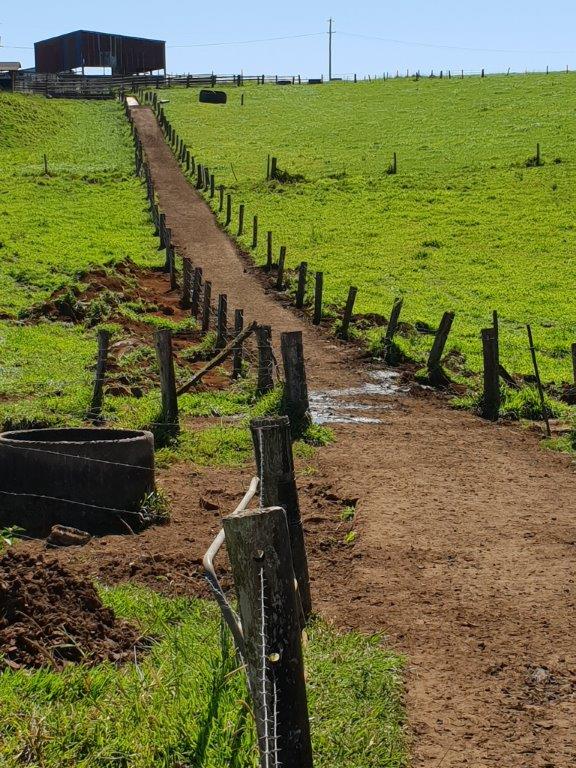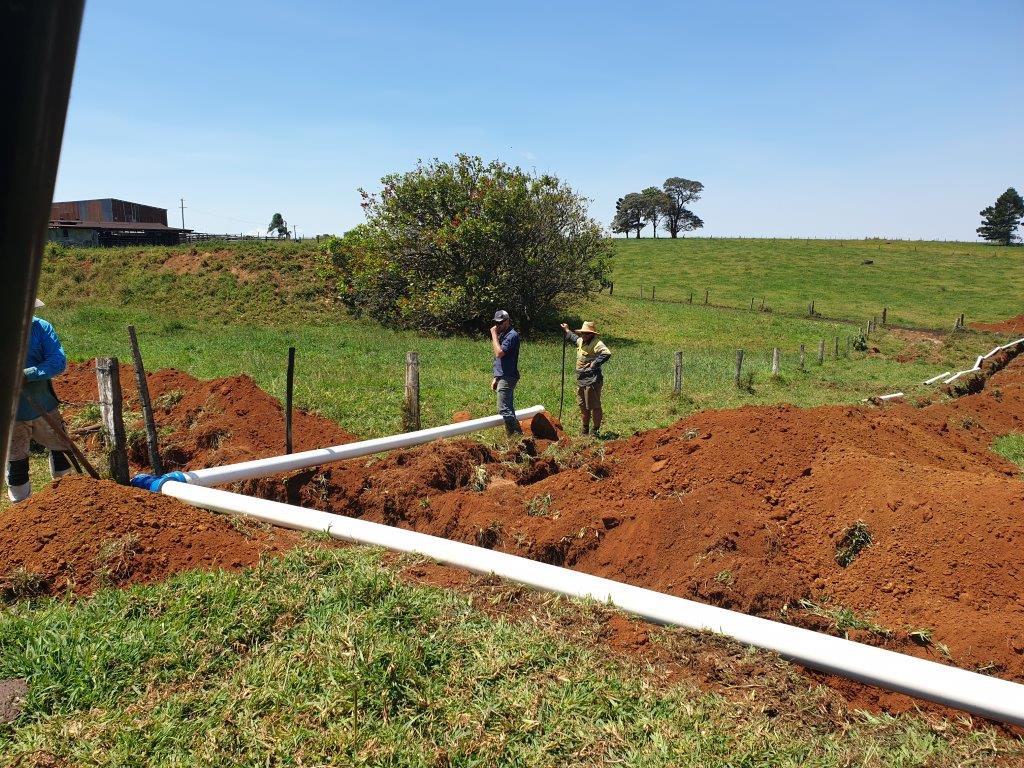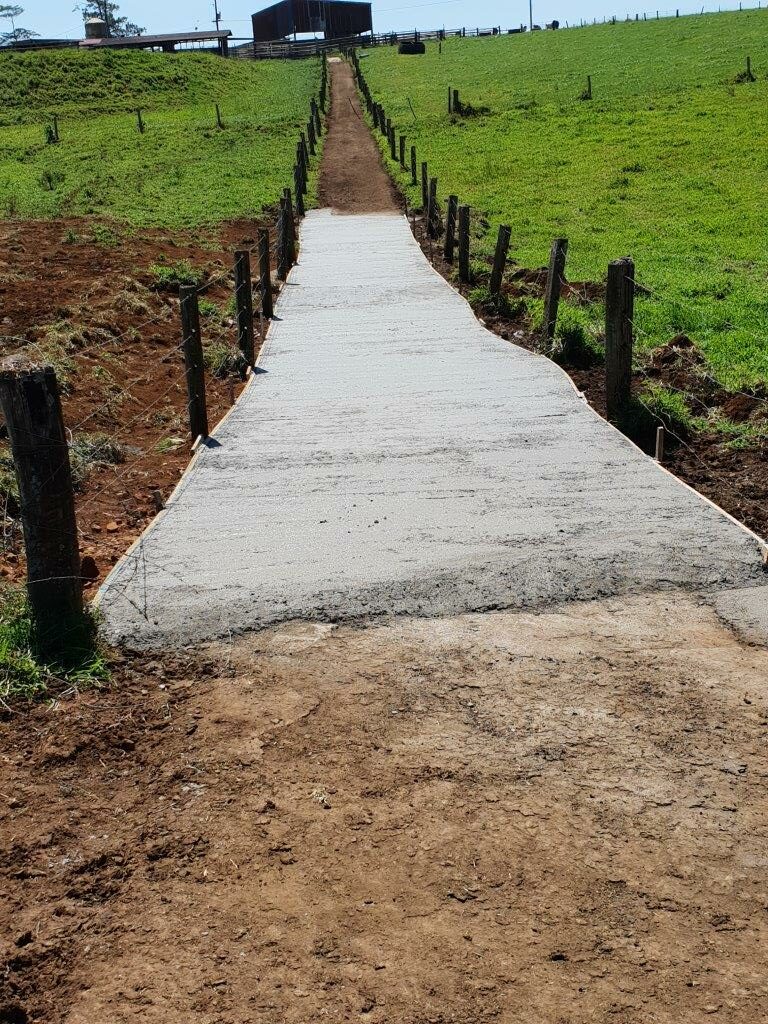Underground main to increase area for effluent application
Case Study
2019 Lion Dairy Pride Landcare Grant
| Grant Recipient: | James and Sari Geraghty |
| Farm/Dairy Name: | Geraghty |
| State/Town: | Millaa Millaa, Queensland |
| Project Name: | Underground main to increase area for effluent application |
| Grant Amount: | $10,000 |
Background
Nestled in Queensland’s Atherton Tablelands James and Sari Geraghty operate a 250 head dairy farm producing 1.6 million litres of milk each year.
The 1350-acre property is set among the region’s pristine environment. Concerned their existing dairy effluent system could contaminate the ground water and overload the soil with nutrients, James and Sari decided to upgrade to a system that would better manage the waste.
Once the decision had been made, James and Sari investigated the system that would best suit their property and budget.
After coming across the Lion Dairy Pride Landcare Grant, James and Sari decided to apply for funding to partially cover the cost of installing the underground mainline.
Speaking about the grant application process James said it was a “very easy and simple process.”
Project Overview, Purpose and Goals
The Geraghty’s had used the dairy effluent to fertilise 3.5 hectares of the property but worked out if they installed 500 metres of underground pipes this could be expanded by an additional 8.5 hectares without overloading the soil or risking ground water contamination.
As well as the additional land that could be fertilised, the pipes were a more efficient way to spread the waste and could also irrigate the pastures to improve production particularly during dry seasons.
By using the effluent over a larger area, the dairy would reduce its need for chemical fertiliser and would also prevent nutrient overload as the same quantity is spread further. This would also reduce the risk of the property’s creeks and ground water being contaminated which was especially important as runoff could spill into the nearby country and waterways.
The work on the pipeline began in August 2019 and was completed within a few months. The system is made up of a network of pipes and outlet and inlet hydrants to move the waste from the dairy to the pasture. Taking a whole farm approach, James and Sari also addressed a section of laneway in a gully that became muddy and eroded as cattle walked along the laneway risking contamination of the nearby creek. To address it they recapped the lane and installed a drainage pipe underneath it.
A sediment dam that captures runoff from nearby paddocks and the laneway was cleaned to prevent it contaminating the nearby creek.
When talking about the project James said they had researched and planned for the system that would best work for their property, but it wasn’t without setbacks.
“We were organised to get it done but the weather and the contractor’s workload meant it took a lot longer than was expected,” James said.
Project Outcomes
While it is still early to fully judge the success of the pipeline, James said they were expecting the spreading of effluent over the larger area will greatly reduce the need to use chemical fertiliser.
“By cutting down on the amount of chemical fertiliser we have to buy and by maximising the use of effluent, we’re expecting to see both an economic and environmental benefit,” James said.
“The finished system pumped most of the effluent out before we got some very welcome rain,” James said when asked about the operation of the new waste management system.
James added they expected the environmental and economic benefits of the expanded system will benefit the dairy for the years to come.
Conclusion
With work completed, James said they’re expecting the pipeline to be manageable and are planning soil testing every three years to monitor soil nutrients.
In terms of maintenance. James said they are expecting they will be able to build on the pipeline spreading the effluent water over a larger area whenever feasible to maintain maximum benefit.







